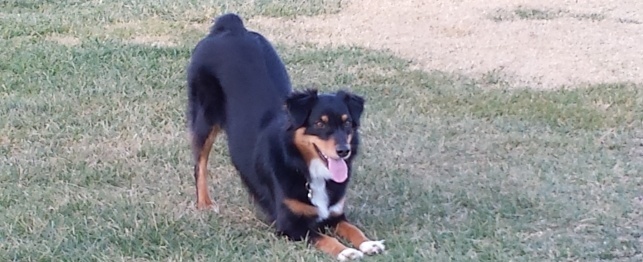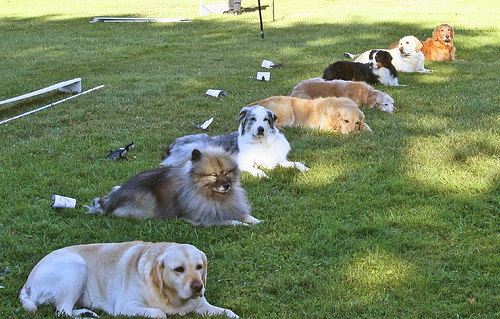All dogs need training so that they learn to behave appropriately, especially in a family environment. To this end, training collars have been created to help you with this process, and they have proven to be very effective in this role. As with many things however, in the wrong hands, dog training collars can be used to hurt and abuse dogs, so you need to understand how they work and what they do.
The prong collar looks like a medieval torture device, but is actually one of the gentler training collars being investigated here. When the leash is pulled, the prongs start to pinch the back of the dog's neck. The thinking behind this is to replicate the memory of the dog's mother's teeth nipping the scruff of the puppy's neck. The collar is quite safe to use, the only real problem occurring if the fit is poor. If your dog is one that pulls strongly at the leash though, the prong collar might not be suitable.
The adjustment of these collars is quite easy though. Simply remove or add prongs to suit the neck of your dog. If you can just insert a finger between the neck of the dog and the prong collar, then you have just about got it right.
The Gentle Leader dog collar (or Halti collar) looks more like a harness. It works by closing the dog's mouth when you pull on the leash. The method aims to control the dog's general movement by controlling it's head. The theory being that the body will follow where the head goes. This type of collar is well suited to aggressive animals that lunge or bite
Head control in this way does present the trainer with some difficulties. Most dogs will not take kindly to have any sort of restriction placed over their face and nose, so the dog might take a while to get used to collar. Also, by pulling on the head, it is possible to injure the dog's neck or back, so you need to take care when using a head collar.
Choke collars can be very effective in controlling a dog. Sadly, in the wrong hands, choke collars can be exceedingly cruel and can hurt dogs. Control lies within the trainer themselves. If you genuinely think that a choke collar will do what you want, but you are not sure how to use one properly, seek expert guidance.
Choke collars must be fitted correctly in order to be effective. When the leash is pulled, the collar will tighten around the dog's neck. When the leash is relaxed, so is the collar. At least that is what should happen. If the collar doesn't fit correctly, it might not loosen with the leash. This could obviously restrict the dog's airways and cause it to suffer.
Electronic dog collars are relatively new dog training devices. If they are used correctly, they can be a very humane way to train a dog. Used incorrectly, then the dogs could suffer as a consequence.
They work by passing a shock to the dog via a remote control, which is controlled by the trainer. The trainer has complete control over how big a shock to administer to the dog. It is generally accepted that the shock should be strong enough to make the dog's ears twitch, and no more. How much that is depends on the size of the dog and the collar itself. If your dog starts to yelp when you administer a shock, then the charge is probably too high. If you are unsure, seek advice.

 NILIF Behavioral Shaping For Dogs
Why You Should Consider NILIF
Do you have a stubborn, pushy
NILIF Behavioral Shaping For Dogs
Why You Should Consider NILIF
Do you have a stubborn, pushy
 City Slickers: 5 Tips for Urban Living with Cats & Dogs
City Slickers: 5 Tips for Urban Living with C
City Slickers: 5 Tips for Urban Living with Cats & Dogs
City Slickers: 5 Tips for Urban Living with C
 Playing Charades with Your Dog
Playing Charades with Your Dog
Playing Charades with Your Dog
Playing Charades with Your Dog
 Canine Manners 101: Teaching your dog the basics of the 揝tay?Command
Teach Your Dog The "Stay" Command
Teaching your
Canine Manners 101: Teaching your dog the basics of the 揝tay?Command
Teach Your Dog The "Stay" Command
Teaching your
 MORE Games That Delight Dogs
MORE Games That Delight Dogs
MORE Games That Delight Dogs
MORE Games That Delight Dogs